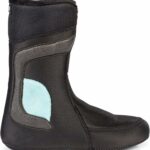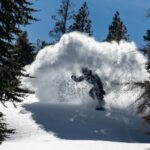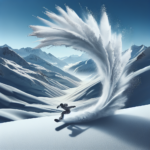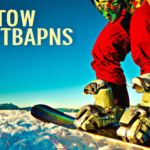Imagine barreling down a snowy mountain on your snowboard, wind in your face, adrenaline pumping. You’re navigating the twists and turns with ease and then suddenly, you lose your grip. Your momentum falls flat and you’re stuck in the snow. This could be a sign that your snowboard’s edges aren’t sharp enough. In the article “How Sharp Snowboard Edges?” you’re going to learn about the ideal sharpness for your snowboard edges, why it’s essential for optimum performance, and how you can achieve it. Brace yourself for a thrilling ride through a landscape of information that could transform your snowboarding experience into an unbeatable one. Your snowboarding adventure is only as good as the sharpness of your board’s edges. Don’t compromise; keep them razor-sharp.
Importance of Sharp Snowboard Edges
Ever wondered why every seasoned snowboarder keeps their board’s edges nice and sharp? Let’s lay down the reasons.
Safety benefits of sharp snowboard edges
No one loves a nasty spill when snowboarding. Sharp snowboard edges give you a better grip on the snow, making turning, stopping, and overall maneuvering much safer. This kind of control can be a lifesaver, especially in emergencies when you need to avoid a collision or stop yourself going over a precipice.
Performance enhancement with sharp edges
Sharpened edges aren’t just about safety though. They’ll also boost your on-snowboarding performance. Whether you are performing tricks in the park or carving up the backcountry, sharp edges provide swift turns, enhanced stability, and overall smoother rides.
Importance in varying weather conditions
Weather conditions always have something new to throw your way. When it’s icy or hard-packed snow, sharp edges come into their own, offering better control and stability. Even in slushy conditions, sharp edges can help you carve your way through without giving way.
Determining When to Sharpen Your Snowboard Edges
While the importance of sharp snowboard edges is clear, knowing when to sharpen them can be tricky.
Signs your edges need to be sharpened
You know it’s sharpening time when your board starts feeling as though it’s sliding out from under you, especially during turns. Noticeable rust, nicks, or uneven areas along the edges are also tell-tale signs that your board edge needs some TLC.
How often should you sharpen your edges?
The frequency of edge sharpening depends on how often and aggressively you ride. On average, after 5-7 days of riding in normal conditions, your edges will need a good sharpening. But, if you are a power rider, you might need to do it more often.
Evaluate condition of your board
Your snowboard is not all about edges. Before sharpening, look at your board’s overall health. If there’s significant base damage or core shots, you might need to repair these areas first, as they too affect your boarding performance.
Tools Needed for Sharpening Snowboard Edges
You’ll need a few essential tools to keep your snowboard edges sharp.
List of required tools
The primary tools include a file guide for accurate angle sharpening, a diamond stone for polishing the edge, a gummy stone for removing rust and burrs, and a snowboard file, specifically designed for use with a file guide.
Where to purchase these tools
You can easily find all the needed tools at a local sports or snowboarding gear shop. Online retailers also offer these tools often as part of a snowboarding maintenance kit.
Choosing the right tools for your snowboard
Selection of the right tools depending on your snowboard’s specs and edge angle is crucial. Read up on your board manufacturer’s guidelines or consult with experienced snowboarders or store representatives to make the right choice.
Preparation before Sharpening Snowboard Edges
Sharpening snowboard edges require some prior preparation to keep things smooth and safe.
Safety precautions to consider
Sharpening edges involves handling tools that can cause injury if not handled properly. Make sure to wear protective gear, especially gloves.
Cleaning your snowboard
You should start by cleaning your board with a base cleaner to remove any dirt, wax, or grime that might interfere with the sharpening process.
Setting up your workspace
Choose a well-lit, comfortable space to work. Use a snowboard vise to secure your snowboard and ensure a steady and comfortable working position.
Step-by-Step Guide to Sharpening Your Snowboard Edges
Once you’ve prepared, it’s time to get down to the actual sharpening.
Understanding the edge angles
Edge angles vary between boards. Understanding your specific board’s edge angle is crucial to achieving a correct and effective sharpening. Typically, a 90-degree angle is common for most boards.
How to sharpen the edges properly
Starting at the tail and going up to the tip, run the sharpening tool along the edge. Maintain a consistent angle and only work in one direction – tip to tail. Repeat the process a few times for a sharp and clean edge. Make sure not to overdo it, as too much sharpening can weaken the edge.
Addressing common pitfalls during sharpening
Avoid applying too much pressure or changing the angle of your tool while you’re sharpening. Both of these can lead to an uneven edge, which can affect your ride. Always keep your movements steady and consistent.
Post-Sharpening Procedures
What you do post-sharpening is just as important as the sharpening itself.
Final inspection after sharpening
Give your board a detailed once-over. Feel the edges to ensure they are smooth and uniform. Make sure no rust or nicks remain on the edge.
Cleaning and maintenance post sharpening
Remove any metal filings from the sharpening process, then wax your board. Waxing after every sharpening helps to maintain your edges, keep your ride smooth, and increase the board’s longevity.
How to store your board after sharpening
Store your sharpened board in a board bag or a dry, cool place. Keep it out of direct sunlight and away from any moisture-prone areas.
Troubleshooting Common Sharpening Issues
While sharpening, you might encounter some common issues. Worry not, here are solutions for them.
Solving issues with uneven sharpening
An uneven edge is usually due to inconsistent pressure or angle during sharpening. In this case, the fix involves using a consistent stroke and angle throughout the sharpening process.
What to do if edges are too sharp
Over-sharpened edges can cause more problems than they solve. If your edges are too sharp, dull them slightly with a gummy stone to achieve the right sharpness level.
Handling damaged or chipped edges
If your edges are significantly damaged or chipped, a professional tune-up might be needed. Sometimes, damaged edges need to be fully replaced, which is a job for experts.
Professional Snowboard Edge Sharpening
Sometimes, it’s best to leave it to the professionals.
When to consider professional sharpening
Consider professional sharpening if the edges are severely damaged, if you’re unsure about doing it yourself, or if it’s just time for a full board tune-up.
Understanding the cost and process
Professional sharpening may cost a bit more but comes with expert handling of your board and precise edge sharpening. Remember, preserving your board’s lifetime and your safety are certainly worth the extra cash.
Finding local and reputable professionals
Ask fellow snowboarders, look online, or check out your local winter sports shop for reputable professionals. They should have experience with different types of boards and varying edge conditions.
Maintenance Tips to Keep Edges Sharp
Maintain your snowboard edges and you’ll reap the benefits for longer.
Proper storage of snowboard
Proper storage helps keep your board’s edges sharp. A dry, cool place out of direct sunlight is ideal.
Routine checks and upkeep
Regular checks and light maintenance after every few rides help keep your board’s performance satisfactory. Dealing with small issues like minor nicks or rust promptly gives them no room to escalate.
How to preserve the sharpness of your edges
The standard way to preserve the sharpness of your edges is by being mindful of where you’re riding. Avoid rocky areas or other places that could damage your board. Oh, and always give your board the post-sharpening wax treatment.
Advantages and Disadvantages of Sharp Snowboard Edges
Finally, it’s essential to know the advantages and disadvantages of sharp snowboard edges.
Understanding Improved control and precision
Sharp edges provide precision in control, making your rides smoother, safer, and more enjoyable. It’s easier to execute quick turns and carve into the snow with sharp edges, which can be crucial in avoiding obstacles.
Increased speed and maneuverability
Sharp edges bite into the snow better. This improves acceleration as well as maneuverability, particularly on hardpack or icy conditions.
Potential risks and hazards of sharp edges
While sharp edges have many benefits, they can lead to increased speed, which can be risky for beginners. They can also catch in the snow more easily, leading to potential falls. Remember, sharper is not always better, so it’s essential to strike a balance. With sharp edges on your board and patience in your heart, you can certainly rule the slopes. Have a great ride!
- What Snowboard Bindings Should I Get? - January 23, 2024
- What Size Screws For Snowboard Bindings? - January 23, 2024
- How To Snowmobile On Water? - January 23, 2024










